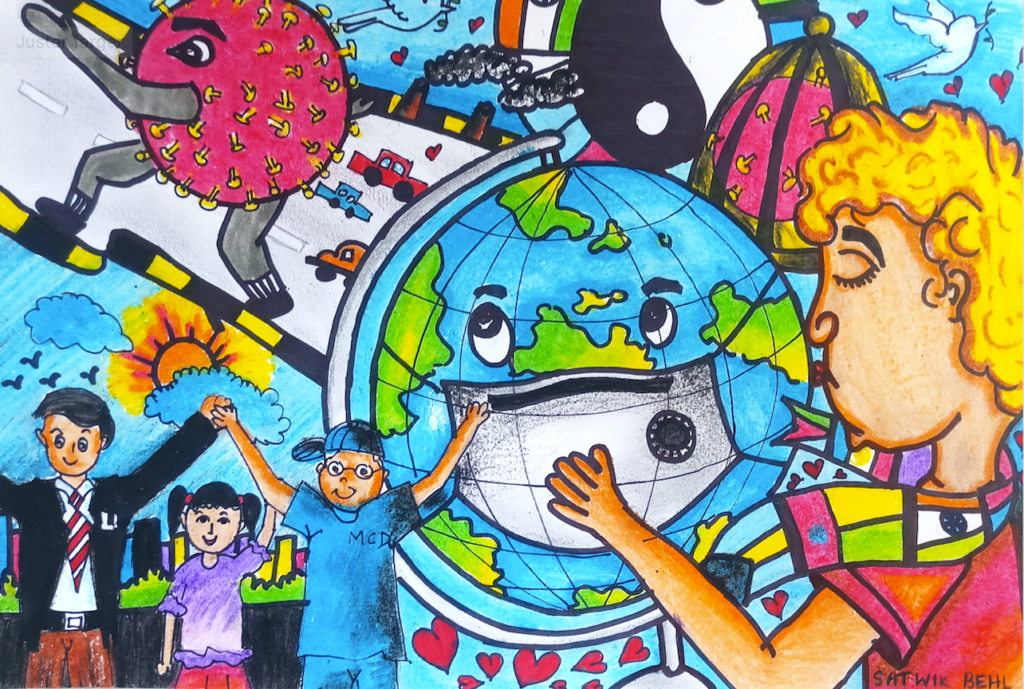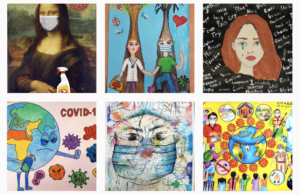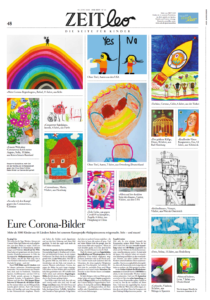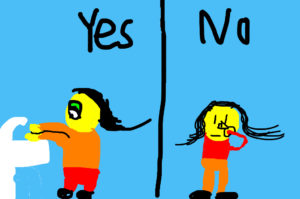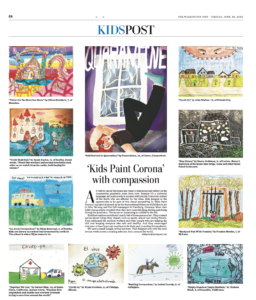Background.
The Covid-19-pandemic affected the whole world and while scientists, politicians and economists are still trying to fight the virus and its consequences, the Museum has focused on including children and young opinions and artistic expression on how this vital historic event affects everyone in the times we are living in right now.
The Covid-19-pandemic affected the whole world and while scientists, politicians and economists are still trying to fight the virus and its consequences, the Museum has focused on including children and young opinions and artistic expression on how this vital historic event affects everyone in the times we are living in right now.
Art campaign #kidspaintcorona
During April-June 2020 the Museum and the German weekly newspaper DIE ZEIT invited children and young to express their views through creating art on how they experience these unusual times and how their daily routines have changed. Children and young have visualized their hopes, their fears, their moments of joy, and what they wish for in future times. Even though most people who are infected by COVID-19 recover the many of the #kidspaintcorona entries and submissions confirm that children and young have many interesting feelings about this topic and that they are crucially observing the various happenings in our developing society.
Results.
The global children’s art campaign has resulted into a historic documentation that visitors now can explore and learn from in the future ahead. More than 5500 entries have been received by the newspaper DIE ZEIT and a selection have been received and uploaded via the Museum online gallery and other social media platforms.
The Exhibition at the Museum in Oslo.
The International Museum of Children’s Art in Oslo now presents over 200 #kidspaintcorona entries including originals and a series of digitals prints. In addition a rich selection of 1300 digital entries can be viewed directly on the Museum’s online gallery.
Hours: from Sept-Dec 2020: Tue/Wed/Thu 09.30-2 PM Sat/Sun 11-4 PM (& from mid Jan-June 2021)
Facts about #kidspaintcorona art campaign:
- – more than 5500 pieces of art submitted
- – entries from 64 countries(Argentina, Armenia, Austria, Australia, Azerbaijan, Bangladesh, Belarus, Belgium, Bolivia, Bosnia and Herzegovina, Brazil, Bulgaria, Canada, Hong Kong China, Honduras, Colombia, Cyprus, Czech Republic, El Salvador, Ecuador, Finland, France, Germany, Ghana, Greece, India, Indonesia, Iran, Ireland, Italy, Japan, Kazakhstan, Lithuania, Malaysia, Macedonia, Mexico, Morocco, Myanmar, Netherlands, Nigeria, Norway, Pakistan, Philippines, Portugal, Poland, Romania, Russia, Serbia, Singapore, Slovakia, South Africa, South Korea, Spain, Sri Lanka, Sweden, Switzerland, Tanzania, Taiwan, Thailand, Turkey, Ukraine, United Arab Emirates, United Kingdom, United States of America, Uzbekistan)
- – youngest artist: 23 months (Cataline, Belgium)
- – oldest artist: 18 years (Mira, Germany)
- – Main topics:– The virus itself in different varieties
– rainbows as a sign of encouragement to other children
– things, that children miss, mostly grandparents, footballs, playgrounds and friends- live before Corona and living with the Virus, the latter was often grey or sad
– pictures showing loneliness and the feeling being locked up
– Superheroes fighting Corona
– exhausted doctors and nurses
– people around the world holding hands, showing their united fight against the virus - – Methods:
- – Mostly pen/pencils on Paper, but also watercolor and oil paint
- – digitally created pictures
- – collages made from personal pictures
- – sculptures using material you can find at home (toilet paper rolls, rice waffles, carton, shoes, playmobile figures)
- MEDIA Partners: Anorak – UKWashington Post – USAJoca newspaper – BrazilNews-O-Matic – US basedLe Journal des Enfants – FranceMi Super Diario, (My Super Newspaper), Latin America
– Children are people who belong to the future and it’s important for our society to recognise and try to understand the world from a child perspective, also when it comes to such a serious matter as the Covid-19 pandemic and Coronavirus that affects them. The most vulnerable and largest population group are often not given the opportunity to express their views or included as conscious participants in discussions about serious issues. However, Article 12, in the UN Declaration, on the Convention of The Rights of the Child states: “Every child has the right to express their views and have them taken seriously!” – Angela Goldin, Director, The International Museum of Children’s Art

